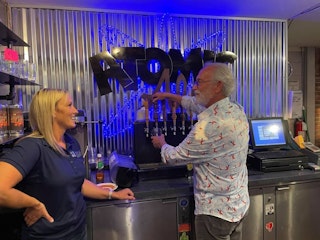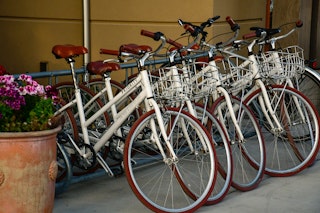Growing with the Flow
By Laura Kostad
It’s no coincidence that the Tri-Cities is situated at the confluence of the Columbia, Yakima, and Snake rivers; since time immemorial, people have gathered at this nexus of abundant water and life to conduct trade and share resources and culture.
It’s no coincidence that the Tri-Cities is situated at the confluence of the Columbia, Yakima, and Snake rivers; since time immemorial, people have gathered at this nexus of abundant water and life to conduct trade and share resources and culture. Indigenous people called this area home, honoring and drawing from the natural environment. It was here that Lewis and Clark’s Corps of Discovery stood, accompanied by their Lemhi Shoshone Indian guide, Sacagawea; westward pioneers soon followed in their footsteps, many of whom chose to settle in the rich river basin where soils were fertile with sediments deposited thousands of years before by Ice Age floods, and where salmon and other fish filled the rivers and plants and wildlife flourished along the banks.
The rivers have shaped it all: The abundant, cold Columbia River water is one reason Hanford was chosen as one of the three Manhattan Project sites during World War II, for developing the world’s first atomic weapons—the water could cool reactors and provide hydroelectric power. The site’s B Reactor, now a National Historic Landmark, stands as the world’s first full-scale plutonium production reactor.
Post-war, a new wave of pioneers flocked to the area as the region began to shift from a strictly agrarian economy to a more diversified one. During that time, river power was harnessed to support the growing communities along the river corridor, with new hydroelectric dams erected on the Columbia and Snake Rivers, providing 100% renewable, carbon-free energy both to the region and eventually neighboring states. This strategic infrastructure also unlocked opportunities to pump water for irrigation and enhanced transportation on the river for barging food to coastal ports, laying the groundwork for increased international trade.
Today, the Tri-Cities communities are sustained by these river currents, attracting new businesses and industry sectors. The majestic rivers are the center of recreational life for residents and visitors alike. The flowing waters are simultaneously an oasis, an aquatic playground, and an adventure current. Utilities here are more than 90% carbon-free thanks to hydroelectricity, a clean, reliable, and economical energy source, from the Columbia River System and Lower Snake River dams. Life along the shore is still evolving as former industrial land and undercapitalized riverfront properties are tapped to bring new opportunities for riverside lodging, recreation, shopping, and other amenities that enrich community connections to the rivers. Whether or not one boats, paddleboards, fishes, swims, or walks the trails that trace the river shores, life in Tri-Cities is inextricably linked to its riverine neighbors, the eternal lifeblood of the region.
































